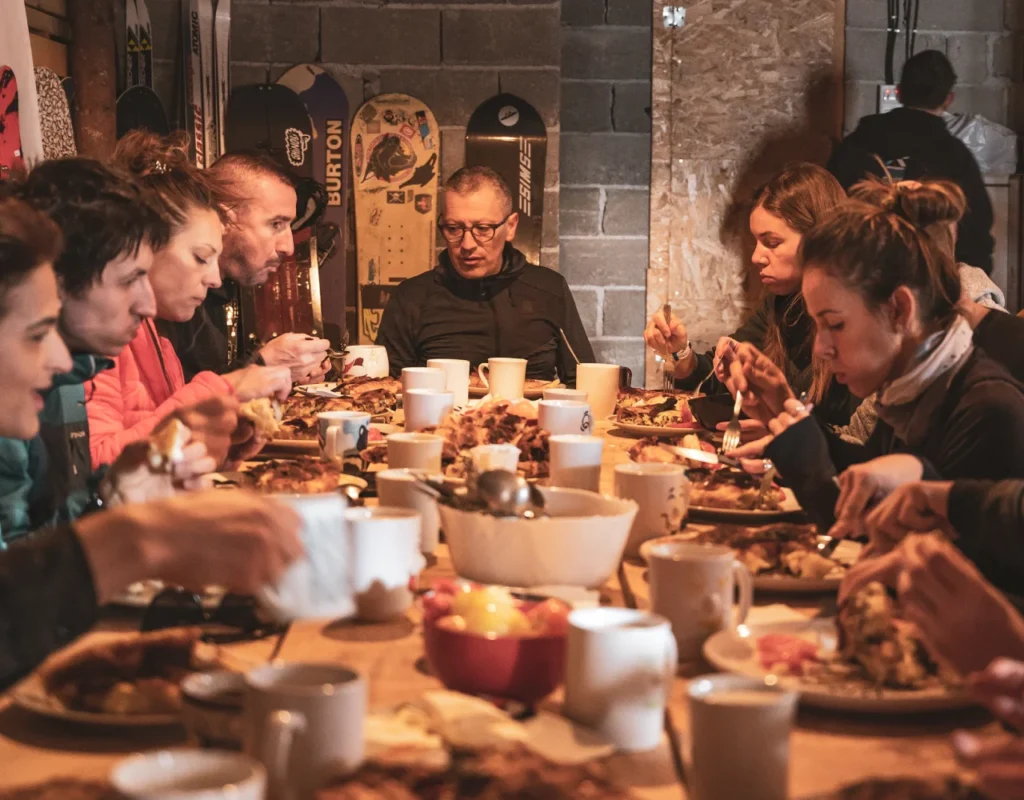Often, when we get to know a new country, people, culture, we also start from the question of what the national cuisine is and what pleasant things this new civilization can surprise us with. Montenegro is just such a culture, hidden, like a pearl, in the very heart of Europe, ready to surprise you, to surrender to all your senses, to offer you on its national table things that you see for the first time, as well as those that you and seen before, but now in a new arrangement. Montenegrins could never be criticized for one thing - they are excellent hosts. Open doors await you here, the best place at the table and the best that your host can offer... Montenegrin national cuisine opens its doors for you - taste the tradition...

National Montenegrin cuisine was primarily influenced by Central European, Austrian, but also Eastern, especially Turkish, cuisine. What does not change in Montenegro is that people still live and eat slowly. Mediterranean dishes, seafood, which are prepared in domestic olive oil, are mainly represented on the coast. The most famous are gradele fish, brodettes made of grouper, moray eel, cuttlefish and other fish. Chard, polenta, salad are added. Along with traditional dishes from the mountain and continental areas - kačamak and cicvara, you won't go wrong if you order lamb and potatoes under the sach. In the village of Njeguši, at the foot of Lovćen, you will eat the best prosciutto, cheese, castradine (dried sheep meat) and sausages - thanks to the sea and mountain air and the wood used for drying. Strong local drinks are drunk - grape brandy, pear brandy and quality wines - Vranac or Krstač. Full of contrasts and diversity, it keeps to the traditional but finds and builds paths to new "trendy" offers from various world tables. Thus, today's Montenegro was not bypassed by other foreign influences either. Italian, French, Mexican, Greek, Spanish, Chinese and many other cuisines are represented in almost all restaurants.
Montenegro is a country rich in tradition and culture, natural resources and good hosts. In this beautiful, diverse country, one thing is for sure - you will eat well. Whether you opt for some of the seafood specialties on the coast or try some of the traditional dishes inland, your impression will surely be positive. Montenegrin cuisine was created under the influence of many traditions and cultures, mostly Mediterranean and Ottoman. Montenegrins are hospitable people and if they invite you for lunch or dinner, they will prepare the meal with a lot of love.
Although Montenegrin specialties differ according to the region, there are some key traditional dishes that should be tried, perhaps one of the most famous is kačamak. Kačamak is a dish consisting of corn and wheat flour, served with cheese and milk, and is a popular dish among Montenegrins. Then Njeguški prosciutto and sausages, from the surrounding areas of Cetinje, are inevitable. They are prepared from high-quality meat that requires special attention. It is dried in oak for several months. It is served with Njeguški dried cheese and homemade grape brandy - Loza. Njeguška sausage is dried in the same way, resulting in extremely tasty sausages.
One of the favorite local dishes is raštan, a cabbage dish with white potatoes and spices. Montenegrins also love cooked meals and soups are included in every lunch. Thick Montenegrin soups are made from noodles, vegetables or potatoes. An interesting variation involves the use of nettles. Almost all broths include the use of fresh meat, so they are rich and nutritious. One of the specialties that we recommend you try in restaurants with traditional cuisine is Montenegrin lamb in milk. This dish is a specialty in Montenegro. To serve eight people, two kilograms of meat are needed, which are then cooked in milk. While potatoes and various spices such as pepper and bay leaf are added during cooking. This dish is also served on festive occasions.
There are many dishes that are specific to Podgorica, but Popeci are by far the favorite among the locals. This is a meal made from pork fillet and is interestingly arranged. What needs to be done is to twist a piece of cheese or old 'cream' and a piece of 'prsuta' into a steak made of veal. This is then deep fried, and you get a dish that has a rich and juicy interior and a crispy and delicious exterior.
Montenegrins also love grilled food. For example, juicy kebabs or kebabs and grilled meat, burgers, which combine well with onions, are everyone's favorite. These two dishes are popular with young people and can be found on the menu of fast food restaurants in Montenegro.
Each meal includes a salad. Balkan salad, which is famous and popular not only in the Balkans, but also in our country, consists of slices of cucumbers and tomatoes. It is served with plenty of grated cheese, which is a high-quality Balkan cheese.
When it comes to sweet delights, one of the most famous dishes in Montenegro are priganice. These small airy donuts are prepared with flour, water, oil, salt and sugar and are traditionally served with honey, but priganice can also be eaten as a savory dish. You can also enjoy low-calorie fresh or dried fruit or slightly more complex, high-calorie and tasty treats: fritters (served with cheese, jam or honey), pancakes, baklava, tulumbe, krempitas, champitas and strudels.
